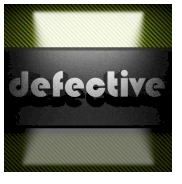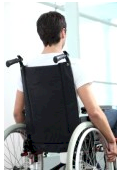Defective and Dangerous Products
 If a product has caused an accident resulting in property damage, injury, or even death to the user or to bystanders due to a defective or unreasonably dangerous nature that could not be foreseen by an ordinary user, then you may have a claim. Manufacturers have a legal duty to the buyers and users of their products for any losses or injuries caused by defects. Moreover, distributors, retailers, and lessors may also be liable for damages such products cause, even sellers of used products.
If a product has caused an accident resulting in property damage, injury, or even death to the user or to bystanders due to a defective or unreasonably dangerous nature that could not be foreseen by an ordinary user, then you may have a claim. Manufacturers have a legal duty to the buyers and users of their products for any losses or injuries caused by defects. Moreover, distributors, retailers, and lessors may also be liable for damages such products cause, even sellers of used products.
You, as a victim, have the right to seek financial damages for any medical expenses incurred by your injuries, as well as future medical care. You are also entitled to seek compensation for lost property, lost wages, your future potential earnings, and the general pain and suffering you have experienced.
 Every year, many people are hurt or killed by defective and dangerous products. The U.S. Consumer Product and Safety Commission (CPSC) reports over 29 million injuries and 22,000 product-related deaths annually. Children are especially vulnerable to product defects. According to CPSC data, in 2011, over 250,000 children were seen in the E.R. for toy-related injuries. And in that same year, close to 75,000 children under the age of 5 were treated in the E.R. for nursery product-related injuries, most typically falls and head injuries caused by faulty or dangerous cribs, crib mattresses, car seats/carriers, strollers, and high chairs.
Every year, many people are hurt or killed by defective and dangerous products. The U.S. Consumer Product and Safety Commission (CPSC) reports over 29 million injuries and 22,000 product-related deaths annually. Children are especially vulnerable to product defects. According to CPSC data, in 2011, over 250,000 children were seen in the E.R. for toy-related injuries. And in that same year, close to 75,000 children under the age of 5 were treated in the E.R. for nursery product-related injuries, most typically falls and head injuries caused by faulty or dangerous cribs, crib mattresses, car seats/carriers, strollers, and high chairs.
Federal and state consumer protection and product liability laws are designed to protect people from defective and dangerous products. Below is some further information that you may find applicable to your case.
Product liability claims are most commonly made under the following grounds: negligence, strict liability, breach of warranty, and/or consumer protection. Negligence claims can stem from failure to adhere to a law or a general duty to act with reasonable care.
 Liability claims can entail (1) manufacturing defects, which involve those defects or flaws that occur in the manufacturing process due to poor quality materials or bad workmanship; (2) design defects, which are those defects attributable to the product designs themselves; and (3) “failure to warn” or marketing defects, which stem from the absence of adequate warnings or instructions about potential dangers that are not obvious to consumers.
Liability claims can entail (1) manufacturing defects, which involve those defects or flaws that occur in the manufacturing process due to poor quality materials or bad workmanship; (2) design defects, which are those defects attributable to the product designs themselves; and (3) “failure to warn” or marketing defects, which stem from the absence of adequate warnings or instructions about potential dangers that are not obvious to consumers.
Disclaimers or statements about liability limitations in the manufacturer or seller’s product information or contracts do not typically prevent you from receiving damages for your injuries. Further, although a defect must have been present when the product left the manufacturer or seller, it need not have been apparent to you immediately in order for you to have a claim.
If you or a loved one had been the victim of a dangerous or defective product accident, please contact me so that we may discuss your case and potential options further. Remember that it is important to preserve the evidence of your defective product, in spite of any damage to it that might have occurred in the accident, and to prevent its condition from changing or deteriorating further. You should save any and all paperwork related to the product, including receipts, sales and/or delivery contracts, warranty documents, and repair and maintenance documents, as they will be important to your claim. If the defective or dangerous product resulted in physical injury, it is important to photograph your injuries and document your symptoms, and to pursue appropriate medical care.
Also keep in mind that statute of limitations laws require that claims be filed within a certain time period after the accident or otherwise you may forever lose your right to pursue legal action. In Washington, depending on the circumstances of your accident, the statute of limitations may be three, two, or even one year from the date of accident. In Oregon, you typically have two years from the date of the accident to file a lawsuit. However, if the product in question was over eight years old, your claim may not be valid in Oregon, although there are exceptions to that rule for certain products and equipment.
Again, if you think you may have a products liability claim, please call my office to set up a free consultation so that I may assess your case and advise you of your potential options for legal action.

